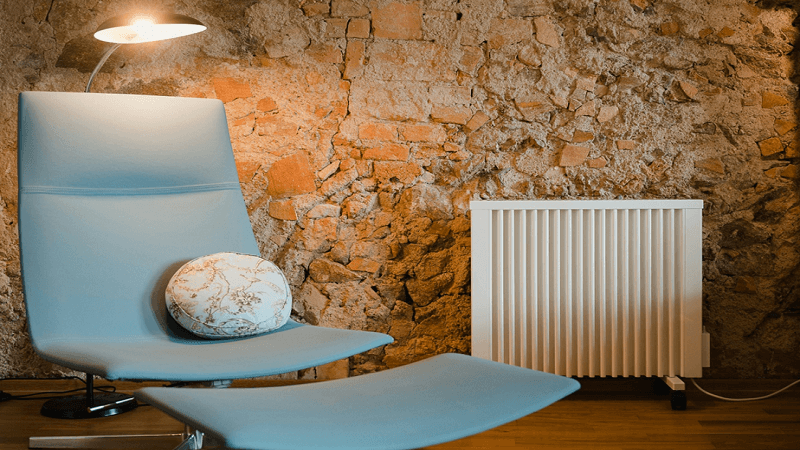Proper preparation before the first cold front can make a huge difference in how a home feels during winter. The weather in Tennessee can turn quickly, shifting from mild afternoons to freezing nights with damp air and occasional ice. Those changes often test a home’s comfort, structure, and energy use.
Seasonal readiness goes beyond new blankets or seasonal décor. It involves checking the systems, insulation, and structure that keep your space safe and efficient. When every part of the home works as it should, the result is comfort that lasts all season long. Below are eight clear signs that show your home is ready for a fresh start this season.
1. Your Heating System Responds Efficiently
A reliable heating system should warm rooms quickly without loud noises or uneven temperatures. Steady performance means the components are clean, the airflow is clear, and the thermostat responds properly. When the system reaches the desired temperature without strain, it’s a sign of good maintenance.
Routine care helps sustain that efficiency. Clean filters, open vents, and regular checkups prevent unnecessary wear. Paying attention to how your home feels on cooler mornings often reveals whether the system is working at its best.
2. Your Furnace or Heat Pump Has Been Professionally Checked
A professional inspection before winter helps identify small issues that could grow into expensive repairs once the temperature drops. A technician examines wiring, removes buildup, and confirms that airflow and temperature levels stay consistent throughout the home.
Residents in Hendersonville often experience damp, chilly winters where temperatures can fluctuate sharply between daytime and evening. Those swings make reliable heating especially important, since systems tend to work harder to maintain comfort. For homeowners exploring heating installation in Hendersonville, TN, it’s worth reaching out to a nearby specialist who can ensure a seamless, energy-efficient upgrade. A properly serviced or newly installed system delivers dependable warmth and keeps energy use balanced throughout the season.
3. Your Insulation Keeps Drafts Out
Good insulation traps warmth inside and blocks chilly air from creeping through small gaps. When rooms stay at even temperatures and no cold spots appear near doors or windows, the insulation is likely in strong condition.
Drafts, on the other hand, suggest escaping heat and wasted energy. Adding weatherstripping, sealing cracks, and checking attic coverage can make a major difference. These small improvements help reduce strain on the heating system while keeping the indoor temperature stable and pleasant.
4. Your Gutters and Roof Are Clear and Sturdy
Clean gutters and a strong roofline protect the home from moisture problems during cold, wet weather. When gutters fill with leaves and debris, water can overflow and freeze, leading to leaks and structural stress. Clear drainage paths prevent that buildup and protect the foundation from water damage.
A visual inspection of the roof adds another layer of assurance. Missing shingles, cracked seals, or weak flashing can lead to leaks when ice or snow appears.
5. Your Windows Let in Light but Keep Out the Chill
Windows that hold warmth while allowing sunlight to brighten the room indicate a well-prepared home. Tight seals and sturdy frames stop drafts from entering, while clean glass lets natural light warm the space gently.
Running your hand along the window edges helps detect air movement. If a faint chill is noticeable, fresh caulk or a new layer of insulation film can correct the problem. When windows stay clear, quiet, and warm to the touch, they contribute to both comfort and energy savings through the entire winter.
6. Your Home’s Air Quality Feels Fresh
A comfortable home depends on clean, balanced air. The atmosphere inside should feel clear rather than heavy or stale. When air moves freely through vents and filters, the difference is noticeable. Poor air circulation often leads to trapped odors or a lingering damp smell that signals dust buildup or restricted airflow.
Changing air filters and vacuuming vents are simple but powerful habits. Those steps help remove pollen, pet dander, and other particles that affect comfort. Regularly checking the humidity level keeps the environment healthy as well. Excessive dryness can irritate, while too much moisture invites mold growth.
7. Your Energy Bills Remain Steady
Stable energy bills through early winter suggest your home is running efficiently. Consistent costs reflect a strong balance between insulation, heating performance, and mindful usage. A sudden jump in your monthly statement often points to leaks, worn seals, or a system that needs maintenance.
Keeping an eye on patterns across several months provides valuable insight. When usage rises only slightly despite cooler weather, your efforts to seal drafts, maintain systems, and improve insulation are paying off.
8. Your Outdoor Areas Are Well-Prepared
A winter-ready home includes outdoor spaces that can handle the season. Patios, decks, and gardens benefit from small steps that prevent damage. Furniture should be covered or stored, while loose items like cushions or garden tools need secure placement. Those simple actions prevent moisture buildup and keep items looking new for next year.
Trimming branches near the roof and clearing leaves from walkways protects the property from avoidable hazards. Water should flow away from the foundation, so checking that soil grades and gutters direct it properly is worth the effort. Outdoor faucets and irrigation lines also require attention.
A well-prepared home reflects care, foresight, and pride of ownership. Each of these signs adds up to a space that can handle the challenges of winter. Addressing small details before the weather turns harsh prevents major problems and ensures a smoother, more comfortable season.
Homeowners who invest time in preparation enjoy lasting rewards. Warm rooms, efficient systems, and clean surroundings create an atmosphere that invites relaxation. Once the essentials are in order, the colder months become a chance to slow down and enjoy the comfort you’ve built. Winter readiness does not have to feel overwhelming. Step-by-step improvements and regular checkups keep your home strong, safe, and cozy through every temperature drop.
